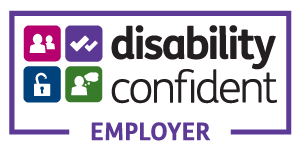The term 'telehealth' gained momentum in March 2020, when the COVID-19 pandemic accelerated the use of digital health. What began as an urgent measure soon became routine, with NHS services, healthcare providers, and practices adopting telemedicine and video consultation as part of everyday care. Today, telehealth is a central component of healthcare provision in the UK.
This guide provides doctors, GPs, and practices with a comprehensive overview of telehealth, including its services, policies, impact, professional requirements, and practical steps for effective integration.
Understanding Telehealth
Telehealth refers to the use of digital technology to deliver healthcare services and consultations remotely. It covers everything from telephone and video calls to online platforms that allow clinicians to see patients and provide diagnosis and treatment without traditional face-to-face contact. Unlike simple phone calls, telehealth relies on structured systems supported by NHS England, NHS Digital, and professional regulators.
Core Telehealth Services and Tools
Telehealth in the UK covers several essential services that enhance accessibility and continuity of care:
- Remote Consultations: Doctors can engage patients through telephone, video calls, or secure messaging platforms, enabling timely advice and treatment without in-person visits.
- Teletherapy and Mental Health Support: Psychologists, psychiatrists, and therapists deliver counselling, cognitive behavioural therapy, and follow-up care digitally, expanding access to mental health services.
- Online Administrative Services: Patients can request repeat prescriptions, access test results, and receive electronic referrals, reducing administrative pressure on practices.
- Remote Monitoring: Wearable devices and health apps track vital signs like heart rate, glucose levels, or blood pressure, allowing clinicians to oversee chronic conditions in real time.
Tools needed include:
- Secure video platforms for consultations and therapy sessions.
- EHR systems are linked to patient records.
- Encrypted messaging and online prescription services.
- Remote monitoring devices and digital health tools.
- Webcams, headsets, and stable broadband.
- GDPR-compliant data protection systems.
The Impact of Telehealth in UK Healthcare
Improving Access
Telehealth has broadened healthcare provision by improving access for patients in rural areas, those with limited mobility, and children and young people who may struggle with traditional in-person sessions.
Patient Convenience
The ability to attend consultations remotely offers greater patient convenience, reducing travel time and waiting lists.
Efficiency for NHS Staff
Telehealth allows NHS staff to manage workloads more effectively, with simple cases handled remotely and complex cases directed to face-to-face appointments.
Supporting Health and Social Care
By linking hospitals, GPs, and community teams, telehealth strengthens collaboration across health and social care, ensuring continuity.
How Doctors Can Get Into Telehealth
Doctors such as GPs, hospital specialists, and other health professionals can deliver telehealth if they meet training and compliance requirements.
Training and Skills
Building digital literacy, mastering online consultation methods, and adapting decision-making without full examination are essential. GMC guidance modules and CPD courses in digital health support this transition.
Licensure and Compliance
Doctors must:
- Maintain GMC registration.
- Hold indemnity insurance that covers remote consultations.
- Ensure GDPR and ICO compliance for patient data.
- Follow safeguarding and patient safety guidance.
- Meet Care Quality Commission (CQC) standards.
Steps to Start
- Complete digital training in remote consultations.
- Carry out a Data Protection Impact Assessment with your organisation.
- Use approved digital health tools linked to patient records.
- Establish secure systems for personal data and data sharing.

How Practices Can Integrate Telehealth
Integrating telehealth in practice requires planning beyond installing technology.
1. Infrastructure
Use secure digital platforms linked with patient records, supported by reliable broadband, webcams, and encrypted messaging.
2. Policies
Set clear protocols for when remote consultations are suitable and when escalation to face-to-face contact is required.
3. Compliance
Follow CQC, GMC, and ICO standards. Complete Data Protection Impact Assessments to safeguard patient data.
4. Staff Training
Train all staff to run remote consultations, use digital tools, and recognise safeguarding concerns.
5. Patient Support
Offer simple guidance to help patients access services remotely and address inequalities in access to technology.
Limitations of Telehealth
- Diagnostic Limits: Some conditions need physical examination not possible via telemedicine.
- Digital Exclusion: Poor connectivity, limited skills, or lack of access to technology can restrict use.
- Safeguarding Concerns: Children and young people are harder to assess without in-person sessions.
- Patient Trust: Many patients may prefer traditional face-to-face appointments for reassurance.
- Data Security: Risks arise if patient data and personal data are not properly protected.
Practical Solutions to Overcome Limitations
- Use hybrid models: triage remotely, then escalate to aface-to-face appointment when required.
- Provide telephone alternatives for digitally excluded patients.
- Invest in community partnerships to support patients provided remotely.
- Train staff to spot safeguarding concerns and act quickly.
- Conduct data protection training and regular audits of digital health tools.
- Reassure patients through clear communication and patient-centred care principles.
The Future of Telehealth in the UK
Telehealth is expected to expand further across the UK, supported by new digital innovations such as AI-driven triage, wearable monitoring, and digital health services that work across countries. The balance between face-to-face and remote care will remain vital, but clinicians may wish to embrace flexible models that suit diverse patient needs.
As healthcare professionals adapt, telehealth will continue shaping healthcare delivery, ensuring that services during the COVID-19 pandemic evolve into sustainable long-term care.
Conclusion
Telehealth has transformed healthcare delivery within the UK. For doctors, GPs, and practices, it offers opportunities to improve access, efficiency, and patient satisfaction while raising new challenges in compliance, safety, and equity. With the right governance, tools, and training, telehealth can deliver safe and effective patient-centred care.
Partner With Us to Build Your Telehealth Career
At Verovian Medical Recruitment Agency, we connect clinicians with locum, contract, and permanent opportunities across the UK, including roles in digital-first healthcare provision. Whether you are a GP or a specialist doctor looking to expand into telehealth services, we will help you find the right role that matches your expertise. Take the next step in your healthcare career with us today.





